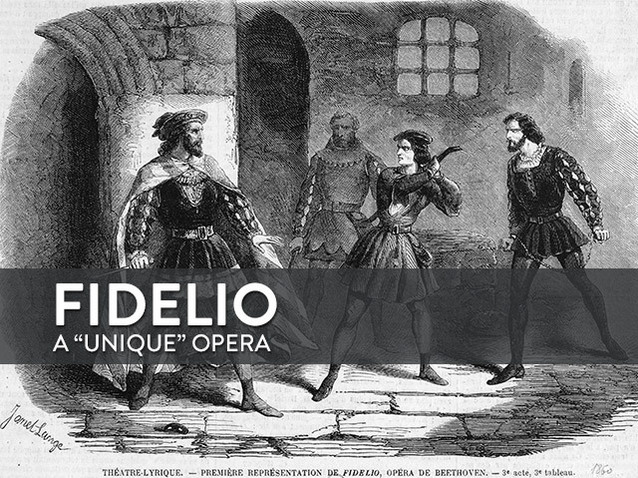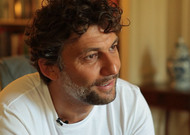 © DR
© DR
In 2020, Beethoven's 250th birthday is commemorated and many opera houses take the opportunity to perform his unique opera, Fidelio. Although it was painstakingly composed, the work is today one of the references in the repertoire and shows an incredible modernity – musically, by laying the foundations for Romanticism, but also for its already "feminist" libretto.
Starting on 1 March, the Royal Opera House - Covent Garden in London performs a highly anticipated new production of Fidelio, directed by Tobias Kratzer, conducted by Antonio Pappano and featuring both Lise Davidsen as Leonore and Jonas Kaufmann as the political prisoner Florestan. To better prepare for it, we explore the genesis and history of Beethoven's unique opera.
***
Fidelio is the only opera composed by Ludwig van Beethoven. No score was so frequently reworked by the composer who, with his customary obstinacy, managed to make his work a success by defying events, censorship and failure. “This opera will earn me a martyr’s crown,” Beethoven said of this hymn to freedom and marital fidelity. Another unique aspect:this unique lyric work celebrates the victory of an exceptional woman who embodies courage and moral strength in the face of arbitrary despotism.Added to that is another novelty: the richness of the symphonic part, in which instrumental affectations contribute towards creating the dramatic atmosphere by taking the listener into the protagonists’ innermost feelings. With this singular work, in many ways uncategorizable, Beethoven opens the doors to German Romantic opera. Fidelio starts like a Singspiel alternating arias and spoken dialogue, to evolve towards the lyrical drama of the future.
1805-1814, one opera, three versions and four overtures
Behind Beethoven’s only opera lies an authentic news event that occurred in Tours during the French Revolution. To arrange for her husband’s escape, a woman thinks of dressing as a man in order to get herself hired as assistant jailer in the prison where he is being held. Her daring enterprise meets with success. Such a romantic story soon attracts the interest of an author, Jean-Nicolas Bouilly, whose play went on to inspire several operas. In 1803, Beethoven began composing what was then being called Leonore, or the Triumph of Married Love. How could he have imagined the countless difficulties he would have to overcome before achieving success with the definitive version of Fidelio in 1814? The failure of the first version, created in 1805, can be explained by the situation in the country. It was twelve days before Austerlitz, and the Viennese had fled the city, leaving theatre attendance to a few French officers… The result of major reworkings that tightened up the action over two acts, a second version experienced very mild success in 1806. “This child of my mind has cost me more pain than the others,” Beethoven would say.
The final version, created in 1814, was a triumph and established itself as a major work in the repertoire. The public was finally won over by this drama exalting the triumph of courage and freedom. The struggle of light against the darkness of arbitrary incarceration ends with a rousing chorus of two verses from Schiller’s Ode to Joy, which was to be heard once again ten years later in the Ninth Symphony.
Over these many years of composition, parts were added, deleted or recomposed. Four overtures were written! The most famous of the three premieres, written for the 1806 version and entitled Leonore III, was often played between the first and second acts. Gustav Mahler started the practice of giving it before the second-act finale. The overture proper was composed in 1814, its uniqueness lies in the fact that it is presented as a symphonic introduction with no relationship to the musical themes developed in the course of the opera.
The unusual struggle of an exceptional woman
Is it possible to see the unique character of Leonore without trying to make Beethoven into a paragon of feminism? Far from the customary roles for women in opera, Leonore contains all the Beethovenian ideals, starting with the greatness of soul that pushes people to act in order to obtain what they desire without passively awaiting the whims of fate.
Neither a passive victim nor the innocent instrument of divine will, the woman here becomes a combative, determined heroine, driven entirely by a noble and just cause, fighting tyranny. She is the medium for the liberating light that casts Pizarro back into the darkness. This “metamorphosis” in the female role is accompanied by an inevitable shrinkage in the role of the main male character, Florestan, who nonetheless remains at the heart of the drama. The character of Leonore is organised around him and his hypothetical deliverance; she disguises herself as a man in order to be accepted as a jailer’s assistant in the prison where her husband languishes.
The appearance of the unfortunate prisoner, delayed until the start of the second act, is dramatically very effective. After a first act marked by action and danger, we are plunged into the dark, despairing depths of the dungeon. Announced by a long symphonic introduction, Florestan’s appearance on stage is rendered solemn by his first word: “Gott!” (God), sung in G sharp, like a heart-breaking complaint. Beethoven sought to reveal the most secret or painful human truth; that is why he wrote the roles of Leonore and Florestan while exploiting the extremes of their respective ranges. The sharp register becomes the expression of a revolt against injustice, or the exultation of joy in freedom regained.
Two acts for a unique musical concept
Fidelio’s unique nature comes in large part from the novelty of its musical concept, which makes it a hybrid work. The opera’s two acts seem to follow two different concepts. The first act falls clearly into the tradition of the Singspiel, a term designating German operas constructed on alternating spoken dialogues and musical morsels, like Mozart’s Magic Flute.In the second act, the dialogues occupy a far more limited place, allowing the role of the orchestra to flourish as the vector for the steadily increasing dramatic tension. Sound processes are first used to create a despairing atmosphere out of which will come the final light, dissipating the darkness of imprisonment. Berlioz cited “the opulent sobriety of the instrumentation” in Fidelio. This oxymoron beautifully describes the contrast between the expressive power of very subtle orchestration and the smaller orchestra that is the source of it. The orchestra provides a description of the protagonists’ inner feelings, giving a new dramatic dimension to the dramatic or exalted tones of their singing. This is the case with the use of the oboe, which serves as counterpoint to Florestan’s simple melody when he thinks Leonore has appeared in his dungeon in the form of an angel (act II, scene 1).
It might be said somewhat simplistically that the first act of Fidelio is still looking towards the past, whereas the second act is already lighting the way to the future. Between The Magic Flute (1791) and Le Freischütz (1821) by Carl Maria von Weber, Beethoven’s only opera occupies a unique position. Hector Berlioz fully understood this: “Now that I have heard this frightening giant Beethoven, I know how far along the art of music is; you have to take it at that point and push it further.”
Catherine Duault
the 28 of February, 2020 | Print

Comments